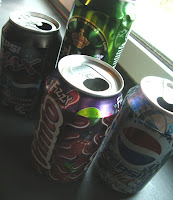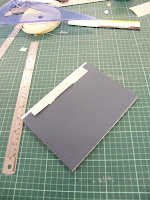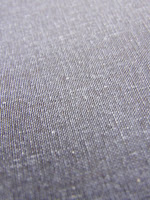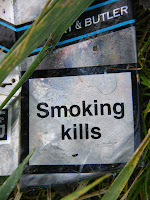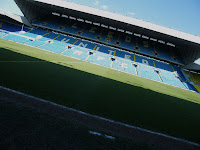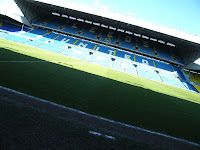
The last two weeks have been so what of an unnerving journey. Not quite knowing what I was doing, and quite where all this taking photos and categorising them would go, I finally got a brief to work alongside some of my fellow students
Vickie,
Ross,
Pearl and
Ed. After listening to what the guys ideas were on our area of study we collectively decided to looks into personal space.
My self evaluation of this brief is discussed below with the help of some set questions.
What problem did you identify?The problem we identified was that the people of Leeds don't have enough personal space.
What evidence did you find to support your decisions?We took photos of the busy high streets and carried out experiments such as counting how many people bumped into us when walking down various crowded streets. Commercial street was the worst by far. I counted the number of people on public transport to prove that buses were overcrowded and also counted the number of people sat in pairs. The interesting thing is that when the bus became less overcrowded most people chose to sit on their own.
What methods did you use to gather your evidence and what forms did it take? (categorise your research using primary, secondary, Quantitative, Qualitative)We tried to get an array of public opinion, coupled with facts that we got from our experimentation and also secondary research which we gathered from newspaper articles and websites.
Primary (Quantitative)
Gathered statistics on number of people on buses
Counted people in town centre locations
Counting number of times people walked into us in various locations.
Facts developed from the statistics above.
Questionnaire asking whether people got bumped into around the city or not.
Primary (Qualitative)
More open questionnaires asking people about whether their personal space is invaded and how.
Photographs of people in city centre.
Brain storm on design sheets.
Quick sketches on design sheets.
Secondary (Qualitative)
Newspaper article on late and busy trains.
Examples of interesting map design.
Secondary (Quantitative)
Leeds 2001 Census.
What methods did you find useful and why?I thought the counting and recording of numbers in public places helped us the most. This more or less formulated our design decision in the end to make people aware of the densest areas of Leeds city centre.
What methods do you find problematic?For me I had a problem with asking people in the street for our questionnaires. I know alot of groups talked mostly to people on our course for their questionnaires so maybe they did not get as good overview as they only asked students. For us we needed to ask people who were in town and get different views of people in different age groups. I tried to get some people to fill in our questionnaires in the city centre but after 7 straight rejections I gave up. I thought maybe I was encroaching on their personal space.
How did you overcome this?
I decided to give some questionnaires to friends and family and posted my questionnaire online. Thankfully I had a few more replies because people could do it in their own time. I got the results I was looking for and also got peoples views from all over the world, not just the local area.
How will you address these issues in future?
I will make any questionnaires I do less demanding and perhaps try the internet survey again as I got a much better response from it. I just feel that people on the streets generally have no time for you. That might be because they instantly think you want to sell them something or you going to keep them too long.
What research didn't you carry out that would have proved useful?
I think we spent too long on the actual quantitative research. The gathering of data was important but I think we could have been more visual in our approach. I think we needed more time to generate a solution even though the solution turned out well.
What five things would you do differently next time?
1)Try to manage time better. It's hard being in a group because you never want to come across as a grumpy sod that only wants to work but that's just my attitude. I like to get stuck in and do it.
2) Experiment more. I think we concentrated too much on the data retrival and fact stuff. Ross and Ed were more or less the ones in charge of the visual element and I feel I didn't contribute to that side as much as I should have.
3) Don't rely on technology. Ed's computer screwed up, and he was away on the presentation day so we were thrown a little bit. We had loads of photos but the only thing we could stick up was experimentation results and loads of data plus our solutions. The visuals bit was missing.
4) Interact with the group more. I felt I sat back abit and didn't really voice my opinion until later in the week. I got more involved on Friday and tried to make sure we won't going to be missing stuff out, and that we had everything for the presentation.
5) Don't do as much computer work. It's as if I rely too much on polished visuals. Graphic Design is different to design for digital media so go back to oldschool methods Adam.
List five things you feel you have learned about the design process over the past two weeks?
Group work can be effective.
Group work can be ineffective.
You can sometimes have no idea what you are doing but you have to just get on with it.
Research is a powerful thing. It should inform every design related thing you do.
Research is not just a load of computer print outs.
Below is images of our research. As I said we developed a lot more factual and data based research rather than visual stuff. All in all though I don't think it was bad for a weeks work, particularly given the amount of time we spent together in a group.



 This is my favourite resolution that Vickie produced. It's not only informative but it looks so good. It was not originally meant to be folded, I don't think, but it works nice as a little leaflet style map that could be opened out.
This is my favourite resolution that Vickie produced. It's not only informative but it looks so good. It was not originally meant to be folded, I don't think, but it works nice as a little leaflet style map that could be opened out.
 These are some of the photos that were missing due to Ed's absence. These images could have taken more of a role in the design of our resolution or even been added to our research presentations. Ed and Ross took these when performing an experiment of the busiest times in Leeds city centre. Really interesting results I do believe.
These are some of the photos that were missing due to Ed's absence. These images could have taken more of a role in the design of our resolution or even been added to our research presentations. Ed and Ross took these when performing an experiment of the busiest times in Leeds city centre. Really interesting results I do believe.


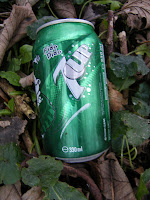

 We decided to go for a day out in Bridlington today. The sea was choppy and the harbour front was freezing but I got a few more shots of drinks cans. Whether they are crushed, discoloured, cut up or in perfect condition it does not matter because that will give me more ways to categorise what I have.
We decided to go for a day out in Bridlington today. The sea was choppy and the harbour front was freezing but I got a few more shots of drinks cans. Whether they are crushed, discoloured, cut up or in perfect condition it does not matter because that will give me more ways to categorise what I have. This isn't related at all but I was practicing my camera usage and manage to take this lovely shot of a seagull. He/she modeled brilliantly too.
This isn't related at all but I was practicing my camera usage and manage to take this lovely shot of a seagull. He/she modeled brilliantly too.



